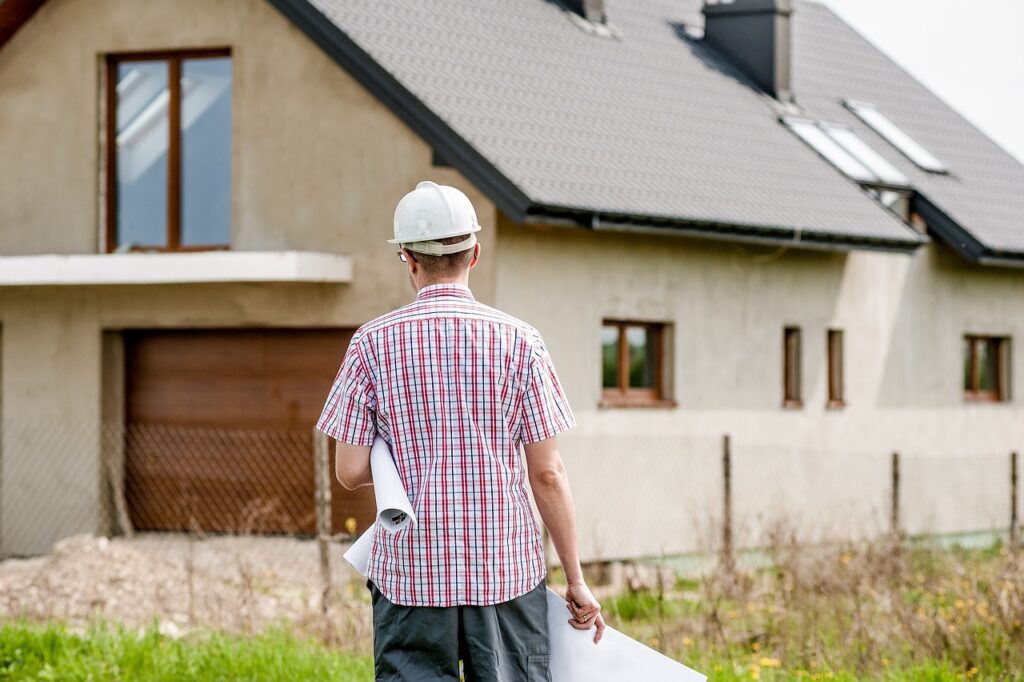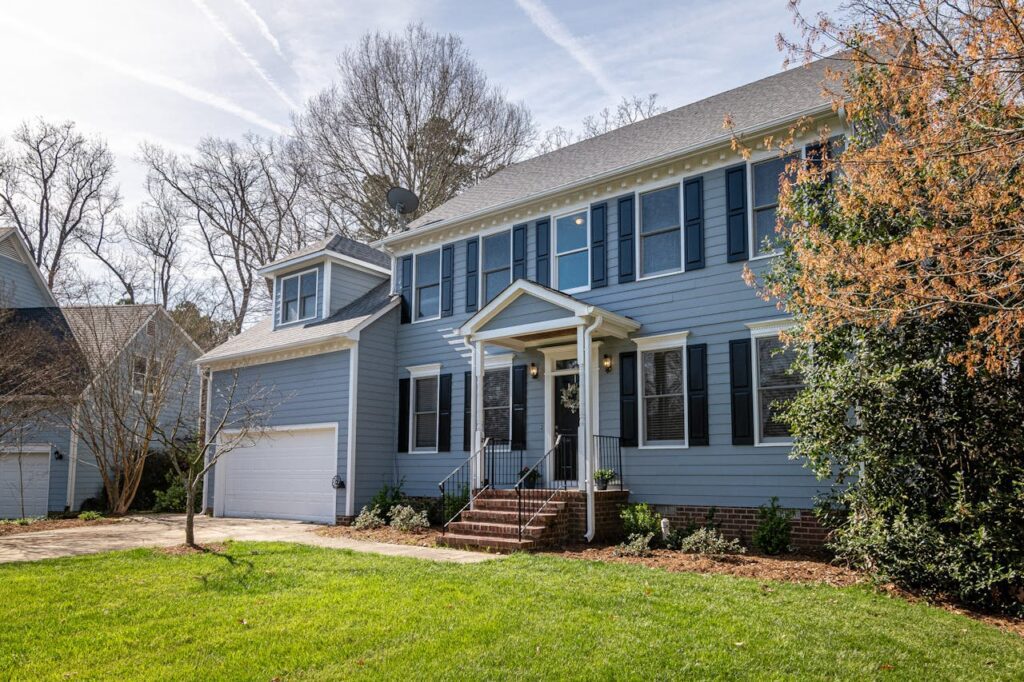Ever wondered about the key disparities and differences between framing for commercial and residential projects? Delving into this comparison sheds light on key differences that can make or break your construction endeavors, whether for commercial builders or residential builds, including residential renovation projects. From structural requirements to design considerations, understanding these differences is paramount for success in either residential building construction sector. Are you ready to explore the distinct nuances that dictate how frames are built for commercial spaces versus residential dwellings, including the differences in use and top? Let’s uncover the essential differences and insights that will equip you with the knowledge needed to navigate these two realms effectively.
Commercial and Residential Construction Defined
Purpose and Usage
Commercial construction focuses on building structures for business purposes, such as offices, retail spaces, and industrial facilities. On the other hand, residential construction involves constructing homes, apartments, and other living spaces for individuals or families.
Residential projects are typically designed with comfort and aesthetics in mind, catering to the needs of homeowners. In contrast, commercial projects prioritize functionality, efficiency, and meeting specific business requirements.
Scale and Complexity
Commercial construction projects are usually larger in scale and more complex compared to residential ones. Commercial construction activities often involve multiple stakeholders, extensive planning, and adherence to strict regulations due to the public nature of these buildings.
In contrast, residential projects, unlike commercial buildings, are generally smaller in scale and less intricate. They focus more on creating personalized living spaces that reflect the preferences and lifestyles of the residents.
Influence of Zoning Laws
Zoning laws play a crucial role in determining the type of construction, including commercial buildings, allowed in a particular area. These laws dictate the residential construction space available for housing developments and the permissible commercial construction work in designated zones.
For example, zoning regulations may restrict the construction of commercial buildings in residential areas to maintain the neighborhood’s character and protect residents’ quality of life. Conversely, certain areas may be zoned specifically for commercial activities to promote economic growth and business development.

Types of Residential Buildings
Single-Family Homes
Single-family homes are standalone structures designed to house one family, offering privacy and independence. These homes typically feature a yard or garden for outdoor activities and relaxation. They are ideal for families seeking a quiet living environment away from the hustle and bustle of urban areas.
Duplexes
Duplexes consist of two separate living units within the same building, housing two families. These structures are popular for residential building construction in urban settings, offering a cost-effective solution for multiple households. Duplexes allow for shared walls while ensuring individual living spaces.
Apartments
Apartments are multi-unit buildings that house families or individuals within the same structure. They offer various amenities such as common areas, gyms, and swimming pools for residents’ use. Apartments cater to individuals seeking a convenient lifestyle with access to communal facilities.
Design Features and Community Needs
Residential buildings are designed with family living in mind, incorporating features such as multiple bedrooms, kitchens, and living areas to accommodate households. Community needs are addressed through shared spaces like parks, playgrounds, and community centers within residential complexes. These features promote social interaction and create a sense of belonging among residents.
Materials Used in Residential Construction
Residential construction commonly utilizes materials such as wood, brick, and concrete to ensure durability and structural integrity. Wood is often used for framing due to its versatility and cost-effectiveness, while brick provides a classic aesthetic appeal. Concrete is employed for foundations and structural components to enhance stability and longevity.
Types of Commercial Structures
Office Buildings
Office buildings are essential for housing various businesses and organizations. They are designed to provide a professional environment for work activities. These structures typically feature open floor plans, meeting rooms, and office spaces tailored to accommodate different business needs.
Retail Spaces
Retail spaces are establishments where goods and services are sold to consumers. These structures are characterized by their customer-friendly layout, with a focus on product display and easy navigation for shoppers. Retail spaces often include storefronts, display areas, and storage facilities.
Warehouses
Warehouses play a crucial role in the supply chain by providing storage space for goods before distribution. These structures are designed to maximize storage capacity while ensuring efficient inventory management. Warehouses feature high ceilings, loading docks, and shelving systems for organizing products.
Sites and Location
Site Selection
For commercial projects, selecting the right site is crucial for the project’s success. The site’s location determines accessibility, visibility, and the overall feasibility of the project. Factors such as proximity to transportation hubs, target market demographics, and competition play a significant role in site selection.
Environmental Assessments
In commercial projects, conducting thorough environmental assessments is vital. These assessments evaluate potential environmental risks and ensure compliance with regulations. They involve studying the site’s history, soil quality, presence of hazardous materials, and impact on surrounding ecosystems.
Zoning Regulations
Zoning regulations have a profound impact on construction activities for both commercial and residential projects. These regulations dictate how land can be used, including building height, size, and purpose. Non-compliance with zoning laws can result in delays, fines, or even project termination.
Construction Materials
Durability and Strength
Construction materials used in commercial projects are often chosen for their durability and strength to withstand heavy usage. In contrast, residential projects may prioritize aesthetics over durability.
In commercial projects, steel and concrete are commonly used due to their high strength, while residential projects may incorporate wood for a more visually appealing finish.
Sustainability Considerations
When selecting construction materials, both commercial and residential projects are increasingly considering sustainability factors. Commercial projects may opt for sustainable building materials to reduce environmental impact, while residential projects may focus on energy-efficient options.
Sustainable choices like recycled materials or renewable resources are becoming more prevalent in both commercial and residential construction to minimize carbon footprint and promote eco-friendly practices.
Specialized Materials
For unique commercial applications, specialized construction materials are often required to meet specific project needs. These materials may include advanced plumbing systems, innovative building structures, or custom-designed components.
In contrast, residential projects typically utilize more standard building materials that cater to general living requirements without the need for specialized features.
Costs and Funding
Higher Costs in Commercial Construction
Commercial projects typically incur higher costs compared to residential ones due to several factors. Firstly, the scale of commercial projects is usually larger, requiring more materials and labor. This increased scale leads to higher expenses for construction materials, equipment, and specialized workforce. Commercial buildings often have complex designs and structural requirements, necessitating advanced engineering solutions and architectural features that come at a premium cost.
Moreover, regulatory compliance plays a significant role in escalating costs for commercial construction. Meeting stringent building codes, zoning regulations, and safety standards set by local authorities can be costly. The need for specialized permits, inspections, and certifications adds an extra layer of expenses to commercial projects. Furthermore, the longer project duration of commercial constructions compared to residential ones results in higher indirect costs such as insurance premiums and ongoing maintenance expenses.
Funding Sources for Commercial Projects
When it comes to funding commercial projects, various sources are available to developers and investors. Loans from financial institutions remain a popular choice for acquiring capital for construction. These loans provide developers with the necessary funds to cover upfront costs and ongoing expenses throughout the project timeline. Another common funding mechanism is through public-private partnerships, where both government agencies and private entities collaborate to finance and execute responsible projects that benefit the community.
In addition to traditional financing options, commercial projects, as well as residential building construction, can also access funding from organizations specializing in real estate development. These organizations may offer investment opportunities or financial support tailored to the unique needs of commercial ventures. Government grants and subsidies are another avenue through which developers can secure funding for specific aspects of their projects, promoting sustainability and innovation in commercial construction.
Financial Implications of Project Timelines
The timeline of a construction project significantly impacts its overall costs. Delays in project completion not only lead to additional expenses but also affect revenue generation potential for commercial developments. Time-sensitive projects may face penalties for missing deadlines, resulting in financial setbacks for the stakeholders involved. Furthermore, prolonged project timelines can increase overhead costs related to labor wages, equipment rentals, and administrative expenses.
To mitigate the financial implications of project timelines on costs, developers must prioritize efficient project management practices and streamline construction processes. Implementing robust scheduling techniques, closely monitoring progress milestones, and promptly addressing any delays are crucial steps toward optimizing project timelines and minimizing financial burdens.
Codes and Permits
Building Codes
Building codes play a crucial role in ensuring the safety and structural integrity of both commercial and residential projects. For commercial projects, these codes are typically more stringent and complex compared to residential ones. Commercial buildings must adhere to specific codes that govern aspects such as occupancy limits, fire safety, accessibility, and structural stability.
In contrast, residential projects have their own set of building codes tailored to the unique requirements of single-family homes, apartments, or condominiums. These codes focus on areas like room dimensions, ceiling heights, egress windows, and electrical systems. Understanding and complying with these codes is essential to avoid costly violations and ensure the safety of occupants.
Permits and Inspections
Securing the necessary permits is a critical step in the construction process for both commercial and residential projects. Commercial projects often require a more extensive range of permits due to their scale and complexity. These may include permits for demolition, excavation, building construction, plumbing, electrical work, signage, and occupancy.
On the other hand, residential projects typically involve permits for activities such as new construction, renovations, additions, electrical upgrades, plumbing installations, and HVAC systems. Obtaining the right permits ensures that the work meets regulatory standards and undergoes proper inspections at key stages of the project.
Inspection Compliance
Inspections serve as a vital quality control measure to verify that construction work complies with applicable building codes and regulations. In commercial projects, inspections are conducted at various milestones throughout the construction process to assess compliance with structural, mechanical, electrical, plumbing, and fire codes.
Similarly, in residential projects, inspections are carried out to confirm that work meets safety standards related to foundations, framing, insulation, electrical wiring, plumbing systems, and overall structural integrity. Failing to pass inspections can result in costly delays and rework to rectify deficiencies identified by inspectors.
Consequences of Non-Compliance
Non-compliance with building codes and permit regulations can have severe repercussions for both commercial and residential projects. For commercial ventures, violations can lead to fines, stop-work orders, legal liabilities, increased insurance premiums, reputational damage, and even forced closure if issues are not promptly addressed.
Likewise, in residential settings, non-compliance can result in fines from local authorities, difficulty selling or insuring the property, safety hazards for occupants, legal disputes with contractors or neighbors, and challenges during future renovation or resale efforts.
Completion Time
Project Types
Commercial projects typically require a longer completion time compared to residential projects due to their larger size and complexity. The average completion time for commercial projects can range from several months to years, depending on the project’s scale and requirements.
Impact of Management Strategies
Effective project management strategies play a crucial role in determining the completion time for both commercial and residential projects. Implementing efficient scheduling, resource allocation, and communication can significantly reduce delays and streamline the construction process.
Market Demands
Market demands often dictate the urgency of project timelines in both commercial and residential sectors. In the commercial realm, rapidly changing market trends and competition can drive developers to expedite project timelines to meet consumer needs and stay ahead of competitors.
Pros and Cons
Pros:
- Efficient project management strategies can lead to timely project completion.
- Meeting market demands by expediting project timelines can enhance competitiveness.
Cons:
- Rushing project timelines without proper planning can compromise quality.
- Longer completion times for commercial projects may result in higher costs.
Factors Influencing Completion Time
- Project Scope: The complexity and scale of a project directly impacts its completion time.
- Resource Allocation: Adequate allocation of resources such as labor, materials, and equipment is essential for timely completion.
- External Factors: External influences like weather conditions, regulatory approvals, and supply chain disruptions can affect project timelines.
Equipment Required
Heavy Machinery
Commercial projects often require heavy machinery such as excavators, bulldozers, and cranes. These machines are essential for tasks like earthmoving, site preparation, and material handling.
In contrast, residential projects typically involve smaller equipment like compact excavators and skid-steer loaders. These machines are more suitable for the scale of work involved in residential construction.
Specialized Tools
For large-scale commercial projects, specialized tools like concrete mixers, jackhammers, and laser levels are necessary. These tools enable precise and efficient work on a larger scale than residential projects.
On the other hand, residential projects may require tools such as drills, saws, and hammers for tasks like interior renovations or small-scale construction. These tools are more versatile and suitable for the smaller scope of residential work.
Safety Considerations
When operating heavy machinery on construction sites, safety considerations are paramount. Proper training and certification are essential to ensure operators can handle the equipment safely and effectively.
Safety measures such as wearing personal protective equipment (PPE), conducting regular equipment inspections, and following proper protocols for machine operation are crucial to prevent accidents and injuries on both commercial and residential sites.
Design Customization
Flexibility in Residential Construction
Residential projects offer extensive customization options, allowing homeowners to personalize their spaces. From choosing paint colors to selecting fixtures and finishes, the design possibilities are vast. This flexibility enables individuals to create living spaces that reflect their unique tastes and preferences.
The customization process in residential projects is often driven by the homeowner’s vision and requirements. Homeowners can work closely with architects and designers to bring their ideas to life, ensuring that every aspect of the design aligns with their lifestyle. This collaborative approach results in homes that are not only aesthetically pleasing but also functional and tailored to the resident’s needs.
Regulatory Constraints in Commercial Design
On the other hand, commercial projects face limitations when it comes to design customization. Commercial buildings must adhere to strict regulatory requirements set forth by local authorities. These regulations cover aspects such as building codes, zoning laws, accessibility standards, and safety regulations.
Due to these regulatory constraints, commercial designers have to navigate a complex landscape to ensure that their designs comply with all necessary guidelines. This often means compromising on certain design elements to meet legal requirements and obtain permits for construction. Balancing creativity with compliance is a key challenge in commercial design, where functionality and safety take precedence over aesthetic preferences.
Emphasis on Functionality and Branding
In commercial projects, functionality and branding play a crucial role in design choices. Commercial spaces need to be not only visually appealing but also practical and efficient. Every design decision is made with the goal of enhancing the customer experience, optimizing workflow, and promoting the brand identity.
Commercial designers focus on creating spaces that reflect the values and image of the business while also meeting the needs of employees and customers. The layout, materials, colors, and branding elements are carefully selected to convey a specific message and evoke desired emotions. Functionality is prioritized to ensure that the space serves its intended purpose effectively while reinforcing the brand’s identity.
Worker Experience
Training and Qualifications
Workers in commercial construction often require specialized training in areas such as electrical work, plumbing, and HVAC systems. On the other hand, residential projects may demand skills like carpentry, masonry, and landscaping. The diversity of tasks in commercial projects necessitates a broader skill set among workers.
It is crucial for workers in both sectors to possess relevant certifications and licenses to ensure compliance with industry standards. In commercial construction, workers may need to adhere to strict safety regulations, given the scale and complexity of projects. Conversely, residential projects emphasize attention to detail and craftsmanship.
Importance of Skilled Labor
Skilled labor plays a pivotal role in upholding the quality and safety of construction projects. In the commercial sector, where projects are larger and more intricate, skilled workers are essential for executing tasks efficiently. In contrast, residential projects rely on skilled labor for precision and aesthetic appeal.
The quality of workmanship directly impacts the overall outcome of a project. Skilled workers contribute to timely completion, cost-effectiveness, and client satisfaction. Whether in a commercial or residential setting, the expertise of workers is fundamental to achieving desired results.
Workforce Size and Specialization
In commercial construction, projects typically involve larger teams comprising various specialists such as architects, engineers, and subcontractors. Each worker focuses on a specific aspect of the project, leading to a high level of specialization. In contrast, residential projects may involve smaller teams where workers handle multiple tasks.
The size of the workforce differs significantly between commercial and residential projects. Commercial endeavors require a more extensive labor force to manage diverse activities simultaneously. In comparison, residential projects often involve smaller groups working closely together, fostering a sense of camaraderie and teamwork.
Closing Thoughts
In understanding the nuances between framing for commercial and residential projects, you’ve gained insights into the distinct characteristics that define each construction type. From the varied building designs to the specific equipment requirements and completion timelines, these factors significantly impact the construction process. By delving into the differences in costs, materials, and worker expertise needed for commercial versus residential projects, you are better equipped to navigate the unique challenges posed by each sector.
Considering these disparities can help you make informed decisions when embarking on future construction endeavors. Whether you’re a seasoned professional or someone exploring the realm of construction, recognizing these distinctions will undoubtedly streamline your project planning and execution. So, as you move forward in your construction journey, remember to tailor your approach based on whether you’re framing for a commercial or residential project. Stay informed, stay efficient, and let these insights guide your path to successful construction ventures.
Elevate Your Home with Red White & Blue Construction!
Thinking about framing solutions for your house? Look no further! Embark on a transformative journey where your home in Lafayette, CA, becomes the sanctuary you’ve always dreamed of. With Red White & Blue Construction, every wall and corner is meticulously framed to ensure your house is as structurally sound as it is beautiful. Dive into advanced framing techniques that provide the perfect foundation for your home, or explore innovative designs that maximize space and enhance functionality. Our reputation in the Bay Area stands as a testament to our commitment, expertise, and the unparalleled standards we uphold. We’re more than just licensed contractors; we’re the architects of your dream home. With our transparent pricing and exceptional client engagement, you’re not just building; you’re reimagining, redefining, and revitalizing your space. Choose Red White & Blue Construction. Craft the next chapter of your home story. Frame Your Home with Excellence and reach out to us today!
Disclaimer
The materials available on this website are for informational and entertainment purposes only and not to provide advice. You should obtain advice concerning any particular issue or problem from a professional. You should not act or refrain from acting based on any content included in this site without seeking legal or other professional advice. The information presented on this website may not reflect the most current building developments. No action should be taken in reliance on the information on this website. We disclaim all liability concerning actions taken or not taken based on any or all of the contents of this site to the fullest extent permitted by law.





